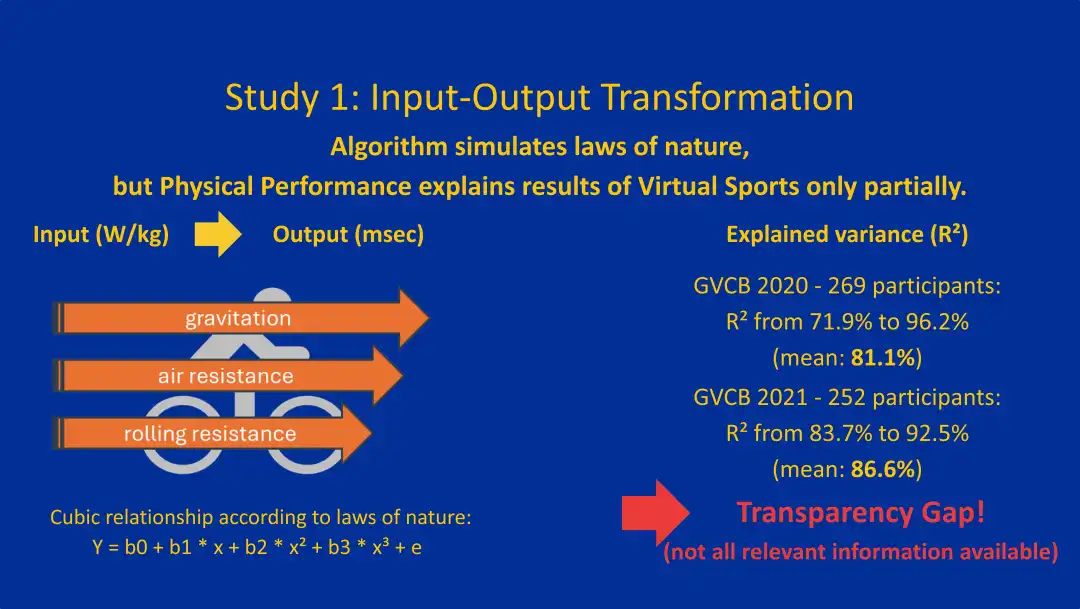Virtual Sports session on the 2024 STRN Summit #
On September 18-20th 2024, the Sport Tech Research Network (STRN) Summit held place. It featured a variety of topics on innovation in sports, one of which was the increasing relevance of virtual sports on human health and performance. Four members of the Virtual Sports Research network participated in this session: professor Anne Tjønndal, professor Daniel Westmattelmann, dr. Ben Greenhough, and (myself) Thibault Fouquaert. This blogpost will shortly discuss what our network members presented about their research and perspectives on Virtual Sports.
Social challenges: avoiding bias #
To kick things off, Anne (the sociologist amongst us 😉) stated an inherent problem about technology in sports, that is, technologies like virtual sports are not objective or neutral tools to achieve health & performance enhancement. In fact, technology is created and developed by someone, for someone – and therefore often biased. In her recent book Social issues in Esports, Anne presented novel insights into social issues in esports related to gender, mental health, doping, cheating, diversity, and inclusion (Tjønndall, 2022). Some examples also related to virtual sports have been touched upon in her blog post ‘Do virtual sports work better for men than women?’.
If such bias is the case, it is apparent that there are several – sociological – challenges involved in increasing the relevance of virtual sports to make it an inclusive and valuable technology. Anne raises the following challenges:
- Lack of resources (financial, skills, knowledge…)
- Social Inequality in Sport Participation and Health (e.g. Sports Technology, Virtual Sports and Social inclusion)
- Gender Biases (e.g. Do virtual sports work better for men than women?)
- Integrity, policy & governance (e.g. Threats and Issues to the Integrity of Virtual Sports and eSports)
How to address and solve these issues? Well, if the answers were already there, there would be no need to have a discussion session around this at the STRN Summit 💡. Hence, Anne addresses the need for more social science research besides performance enhancement research to achieve an ethical and democratic use of novel technologies in sport such as virtual sports. Interdisciplinary efforts are therefore essential to make sure everyone has access and the tools to practice virtual sport, whether that is for performance or non-performance usage.
Data challenges: transferability and transparency #
Daniel explained challenges with the data involved in virtual sports: how does data based on real, physical, efforts translate into virtual performances? And is this transparent and fair as perceived by the participants in virtual sports?
To this end, the performance-result gap is presented. The study of Daniel and colleagues (Westmattelmann et al., 2022) showcases the discrepancy between input and output. The average performance of the winner in a virtual cycling race can be lower than the average performance of subsequent ranked athletes. In other words, the final virtual cycling race its result is not 100% explained by physical performance but – just like in real world racing – other elements besides physical performance are at play that will influence the (virtual) race results. While we know the factors at play in real world racing (e.g. gravity, air resistance, rolling resistance), we do not know all factors at play in virtual sports (e.g. on the Zwift platform during virtual cycling races). As a results, virtual sports (esports) competitions are faced with a transparency gap for those participating and seeking an explanation for their results based on their input 🚴♂️. Such transparency is however needed to address ethical challenges such as integrity and fairness (see also Anne’s part). To this end, the development of virtual sports data dashboards could be beneficial to explain how this is transformed and increase transparency.

Immersion challenges: going beyond #
Third in row, Ben discussed the relevance of virtual sports for performance analysis. Their XR training system at Rezzil is an immersive training simulator that allows for XR/VR sports training in soccer. To use these technologies effectively in professional sports, however, the right partnerships are required to progress and fine-tune its development (Noury et al. 2022). Current research is still lacking on the effective use in sports, for example on which XR design principles best to use, on validation and assessment within training programs, or on who exactly are the required stakeholders and what is their input to develop XR immersive technologies like Rezzil’s.
Concluding #
Thibault concludes this session by lining up each of the earlier presented perspectives on what is needed to increase the relevance of virtual sports for human health and performance. Each perspective is important in its own way and contributes to making virtual sports’ relevant. Therefore, Thibault argues that virtual sports would benefit from an integrative approach and the development of an integrative assessment tool along with clear guidelines on ethical yet effective use of virtual sports. Such tool could help outline the needed requirements and give insights into how existing solutions meet these requirements. More importantly, an integrative approach would assure that not only requirements for performance but also human health and societal are incorporated in the development and use of virtual sports. For example, an integrative assessment tool could:
- Increase awareness amongst key stakeholders in sport policy, on all of the topics of social issues, health, or performance
- Allow to discover, recognise and assess the potential of a new virtual variants within a (traditional) sport
- Provide strategies on both long and short term approach to virtual sports for all of the topics of social issues, health, or performance.
With the rapid development of virtual sports, sports policy makers will likely sooner than later need to be able to answer questions like ‘if the tech to host a virtual sports discipline is readily available on the market tomorrow, what will you do? or if this is already available, assume the IOC decides tomorrow that the virtual discipline will be hosted at LA2028, what will you do?’. An integrative approach that addresses all of the above research perspectives could be a starting point in answering such questions.
References #
Le Noury, P., Polman, R., Maloney, M., & Gorman, A. (2022). A narrative review of the current state of extended reality technology and how it can be utilised in sport. Sports Medicine, 52(7), 1473-1489. https://doi.org/10.1007/s40279-022-01669-0
Tjønndal, A. (Ed.). (2023). Social issues in Esports (1st ed.). Routledge. https://doi.org/10.4324/9781003258650
Westmattelmann, D., Stoffers, B., Sprenger, M., Grotenhermen, J.-G., & Schewe, G. (2022). The Performance-Result Gap in Mixed-Reality Cycling – Evidence From the Virtual Tour de France 2020 on Zwift. Frontiers in Physiology, 13. https://doi.org/10.3389/fphys.2022.868902
